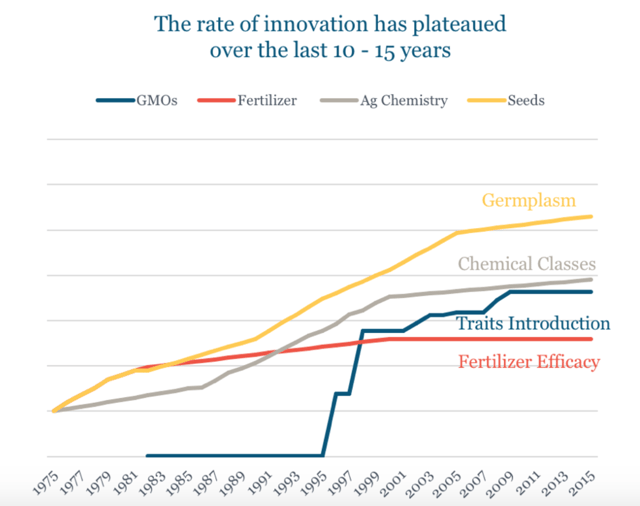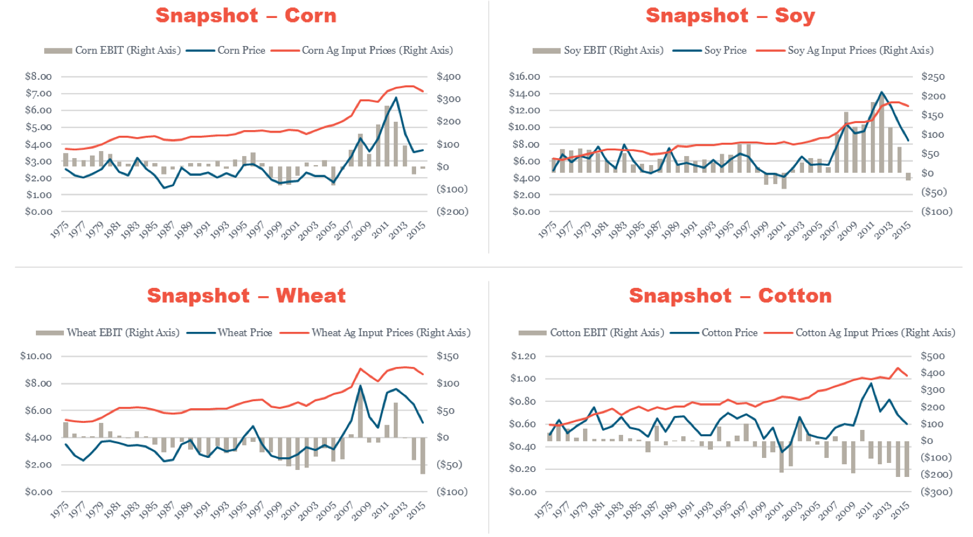By David Perry
At Indigo, we believe that we have the opportunity to create a fundamentally different kind of agriculture company — one that is focused on a different set of values. We believe that a better agriculture starts with 3 principles:
1. If we are to provide sufficient healthy food for everyone on the planet, farmers must first be profitable. The business of farming needs to be economically attractive, bringing in new farmers, in order to sustain and expand the farming community.
2. Agriculture must conserve natural resources; it has to use water wisely and reduce the runoff of nitrogen and other chemicals into our water supply.
3. Agriculture needs to match the needs of consumers. Consumers are changing the way they think about food. They want to know more about how it’s produced and where it comes from. For growers, this creates an opportunity — an opportunity to differentiate their products, growing them in a way that consumers find valuable and are willing to pay more for. This gets growers out of the business of producing a pure commodity, and into the business of producing a value-added product.
Indigo intends to enable the future of agriculture by leading the development of sustainable agricultural technologies based on the plant microbiome, by offering a business model to growers that improves farmer profitability and sustainability, and by directly connecting consumer preferences with farming practices.
Background
Today, we’re not getting much in the way of agricultural innovation. Over the last fifty years, agricultural productivity has been driven primarily by the increased use of four things: synthetic fertilizer, agricultural chemicals, plant breeding and hybridization, and, more recently, genetically modified traits (GMOs). Six companies now sell the majority of these technologies, and these companies are consolidating even further. What’s already an oligopoly is now getting more concentrated and more powerful, despite innovation in those four technologies plateauing over the past fifteen years.

Source: Chart reflects cumulative impact of technology introductions by innovation since 1975. Scale based on Company knowledge and industry research.
Since around 2000, we’ve seen no significant innovation in fertilizer, just one new class of agricultural chemicals in the United States, and only incremental benefits on top of GMO traits developed in the 90s. Plant breeding (“germplasm” in the figure above) has continued to provide benefits, but the lion’s share of those are realized only in corn.

Source: Chart reflects % change since 1975 for soy input costs and yield per acre. Chart based on USDA data, Company knowledge, and industry research.
Despite this plateau in innovation, however, there’s been a dramatic increase in price. Over the same forty-year timeline, there’s been about a 400% increase in the costs of these technologies. Most of this has happened over the past fifteen years, and has been driven primarily by the costs of seeds and fertilizer. It’s important to note that while costs have increased significantly, yields have remained relatively flat. Not surprisingly, the result of this is that farmer profitability is suffering.

Source: Chart based on USDA data, Company knowledge, and industry research.
Here we see the largest four crops in the United States. In each of those crops, we’ve graphed the input price (red), the commodity price (blue), and the gray bars, which represent farmer profitability (or lack thereof). There are a few remarkable takeaways here. Historically, profitability rose and fell with commodity price. Recently, we’ve seen spikes in commodity price, where both profitability and input prices soared. While commodity prices have since come down, they are still at historically high levels. Nevertheless, farmers today are largely unprofitable due primarily to high input prices.
Despite all of the agricultural innovations of the last forty years, farmers today are economically no better off than they were in 1975! This is largely the result of having such consolidated suppliers. With so few big ag companies and so many farmers, no farmer has enough power to negotiate price. Money is flowing from farms to those big input providers. Indigo is focused on reversing that flow of money — putting it back into farmers’ pockets and into their local communities.
The Opportunity
We believe that there is a better way to farm. It transforms grower profitability by reducing weather risk, increasing yields, decreasing input costs, and increasing crop prices. If we’re successful in the way that we think we can be, we improve the economics of farming substantially, giving growers increased market power, premiums at harvest, and data-based agronomic information.
Efforts to make farming healthier and more sustainable often ask farmers to make an untenable choice: to maximize the use of the technologies that they need to reach profitability, or to make economic sacrifices in order to farm in a way that is consistent with consumer preferences. Indigo plans to eliminate that tension by a) providing microbes and data based agronomic insights that increase crop productivity, b) using microbes to gradually replace half of the synthetic fertilizer and up to 90% of the chemical insecticides and fungicides used today, and c) providing a premium market for crops that are grown using these new approaches.
Together with growers, we have the potential to not only impact an industry, but to fulfill a larger vision of a world where nutritious food is transparently sourced and resources are conserved for future generations.




